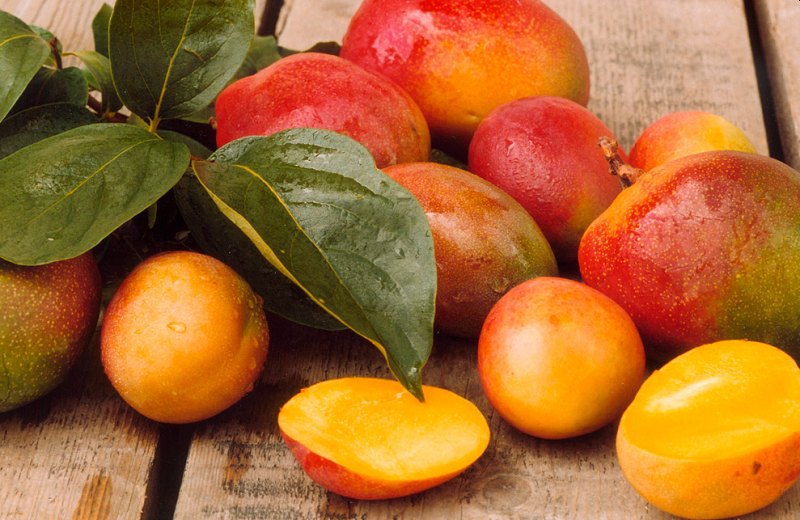Citrus latifolia is known by many common names such as Bearss Lime, Persian Lime, Seedless Lime, Tahiti Lime, Tahitian Lime, Persische Limette, Tahitilimette and lima da Persia. The nearly-thorn less trees in the Rutaceae (citrus family) grow robustly to a medium-large size with a spreading form and have white blossoms. It is a tree of the citrus family that produces the most common type of lime. The plant is native to southern Iraq and Iran, although other varieties were developed in the U.S. and Florida. Persian lime is of hybrid origin. It is actually the result from a cross between key lime (Citrus aurantiifolia) with lemon (Citrus × limon). One of the common name Bearss lime is named after John T. Bearss, who developed this seedless variety around 1895 in his nursery at Porterville, California.
Plant Description
Persian lime is a moderately vigorous, unarmed (thorn less) shrub or small tree that grows about 4.5 to 6.0 m (15 to 20 ft.) tall with widespread, drooping branches. Young shoots are purplish. In contrast to many other citrus species, it is often thorn less or nearly so. The plant is found growing in tropical climates, subtropical with winter rain such as in the Mediterranean and semitropical with summer rainfall. It prefers well drained, sandy or calcareous soils but will not withstand water-logged soils or heavy clays. Leaves are unifoliolate, alternate, broad- lanceolate, medium green, glabrous, pellucid dotted, with acute apex and acute base, and slightly crenulate margin. Flowers are axillary, white, fragrant, solitary or in a few flowered clusters. Flowers contain both the male and female organs of the plant; the male part produce pollen and the female part have the stigma or ovary.
Fruit
Flowers are followed by berry (hesperidium), oval, obovate, oblong or short-elliptical, usually rounded at the base that is 4 to 6.25 cm (1.5 to 2.5 in) wide and 5 to 7.25 cm (2 to 3 in) long, often with nippled or elongated ends, generally seedless or few-seeded. Fruits are initially vivid green to pale yellowish green and yellow when fully ripe. The fruit has thin, leathery skin dotted with oil glands. Pulp is pale greenish in 10 segments, tender and acid. The pollens are not viable. The fruit has a fragrant, spicy aroma and tart flavor, but the aroma and flavor are less intense than those of key lime. The advantages of the Persian lime in commercial agriculture compared to the key lime are the larger size, absence of seeds, hardiness, and absence of thorns on the bushes, and longer fruit shelf life that have combined to make it more widely cultivated. It is also widely available dried, as it is often used this way in Persian cooking. It is larger with less intense citrus aromatics than the key lime.
History
Citrus latifolia were first grown in southern Iraq and Iran, although other varieties were developed in the U.S. and Florida. Persian lime rose to fame after southern Florida’s key lime orchards were damaged by a hurricane in 1926. Mexico is now the main grower and exporter of Persian limes for the American, European and Asian markets. Mexico is the larger producer with a total of 1.9 million tons of limes in 2011. And they mainly distribute to 5 countries that are the largest importers of lime oil this are the US, UK, Japan, Belgium and Ireland. But in recent years Persian lime industry has taken off in Veracruz, dominated by large-scale producers, with over 25% of limes being produced using micro-jet irrigation or other irrigation systems, year-round in micro-climates.


